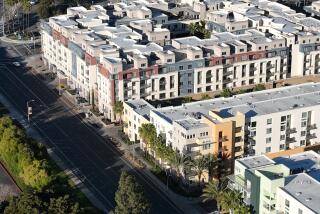Gap Narrows but State, County Still Differ on Malibu
The differences between the state and county have narrowed, but a Malibu land-use plan will still be far from completion if the county Board of Supervisors adopts the version under consideration, representatives of the California Coastal Commission said at a public hearing Thursday.
The Coastal Commission and the county must agree on a plan before it can take effect. Tom Crandall, the coastal panel’s South Coast director, and Steve Scholl, who has supervised the state’s work on the plan, indicated their displeasure with the current version. It was the first time state officials have publicly testified before the county in 3 1/2 years of negotiation.
Eventually, the plan will spell out firm development guidelines for the Malibu coastal zone, which stretches 27 miles along the shoreline and five miles inland to the heart of the Santa Monica Mountains.
Two Issues
Crandall told supervisors that the hundreds of disagreements between the two sides have been reduced to two: how to limit construction on thousands of small lots created during the 1920s in fragile mountain areas, and how soon to allow building in watershed areas, where large canyons meet the sea.
Both issues surfaced as a result of changes made last month by the county Regional Planning Commission in a version of the Malibu land-use plan approved by the state.
Supervisors last week had other concerns about the latest draft and asked county Planning Director Norman Murdoch to meet with each of them individually before they vote on the matter. They postponed their decision, which had been expected Thursday, until Oct. 7.
During the difficult process of drawing up a land-use plan, the state has generally emphasized protection of Malibu’s sensitive environment, which is plagued by fire, flood and falling rock. The county has focused on the rights of property owners to build on their land.
Until the state and county agree, final authority over construction in Malibu lies with the Coastal Commission, which has been reluctant to approve large projects without a long-term blueprint for growth.
When a plan is completed, the county will assume the responsibility for regulating building. Malibu’s natural beauty, combined with its proximity to millions in the Los Angeles Basin, makes it attractive to environmentalists and residents who want to preserve its rural flavor--as well as to developers who want to construct homes.
The Planning Commission did recommend that supervisors accept the state’s limit of about 6,582 more apartments and houses in Malibu----nearly halving the amount the county originally wanted to permit there.
But in exchange, the Planning Commission wanted to drop a state requirement that builders purchase small lots whenever they want to subdivide property in the area along Pacific Coast Highway.
The purchase program, called “transfer of development credits,” preserves the small lots as open space and allows growth in the beach area of Malibu, without changing the total number of lots in the region. Each credit costs about $15,000.
The state wants the county to use the purchase program or some other way of achieving the same end. The purchase program “was identified as one of seven ways” to ensure that the limit would be observed, Crandall said. “We feel that’s not an unreasonable position to take.”
No Guarantees
Without the purchase program, Crandall said, “there’s nothing saying how that (6,582-unit) cap would be implemented.”
The president of a civic group representing 1,000 Malibu families agreed. Leon Cooper, who heads the Malibu Township Council, said he believes pressure to change the cap would become severe as development neared the limits. He said he is worried because the county does not want to change land-use maps to show only 6,582 more dwellings.
“We do not see how the county will enforce a cap that is in conflict with the map,” Cooper said. “The cap is . . . simply a snare and a delusion.”
Murdoch said he was disappointed by the negative reaction. He noted that the county has agreed to limit building in Malibu to 2,110 dwellings until Pacific Coast Highway has been improved to handle more traffic. That was the state’s idea.
Second Disagreement
“I didn’t hear them say then that a cap could not be implemented,” Murdoch said. “How do you deny the 2,111th application there?”
The second major disagreement between the state and county involves planning for construction in watershed areas where creeks snake along Malibu canyon bottoms. The state wants specific plans for each canyon before permitting building to begin.
“That appears to be deleted” in the plan supervisors are considering, Crandall said. “That would, in effect, open up those sensitive areas to development before there’s a plan.”
Murdoch said the county’s draft restricts bulldozing and requires buildings to be set back from streams. “If we were going to prepare a plan, what would we put into it that isn’t already there?” he said. “These people are saying, we’ve been in limbo for years, don’t put us in limbo for another four years.”
Supervisor Pete Schabarum asked Murdoch to report back on testimony from several property owners who said the proposed requirements are too restrictive. Supervisor Mike Antonovich wanted more information on the coastal zone boundary. Some landowners testified that the zone, set by the state Legislature, penetrates about two miles farther inland than the Coastal Act permits.
More to Read
Sign up for Essential California
The most important California stories and recommendations in your inbox every morning.
You may occasionally receive promotional content from the Los Angeles Times.










